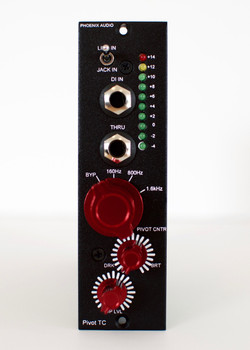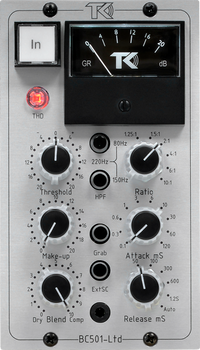Description
Phoenix Audio is pleased to announce the N90-DRC/500 compressor also known as the David Rees Compressor. This is an API 500 series format compressor & gate which will complete the Phoenix Audio 500 series line up and will sit alongside the very popular DRS1R/500 mic pre amp and the new DRS-EQ/500 4 band EQ.
The unit has a real vintage feel about it, utilizing some vintage parts and creates a very musical and powerful sonic result. Great on drums, this comp really thickens and makes them sound punchy. These same characteristics make it equally good on vocals or instruments. With two units stereo linked, they could be used across the mix.
This compressor was originally designed by David Rees around 20 years ago (original Neve designer - 2254 etc ) but was never released. Shaun Leveque (Phoenix lead designer) and David Rees worked hard to port this across for the increasingly popular API 'lunchbox' series. This product is a testament to David Rees's long career as an acclaimed audio designer, a career in which he has designed for various companies such as Cadac, Tweed Audio, Shep Associates, to name just a few, as well as being heavily involved in Cathedral audio sound system designs such as the system installed in Winchester cathedral. David was also the Technical manager at the revered Rupert Neve company in the 1960’s and 70’s where he was solely responsible for the legendary Neve 2254 & 2253 compressor which are still used and celebrated to this day, as well as having considerable input into many other well known products.
The Phoenix N90-DRC/500 compressor/gate is designed around a VCA control with Class A discrete input and Class A transformer balanced output. The N90-DRC/500 is intended to be driven ‘by ear'. There are no optimum settings that would cover all situations. It is intended to be very musical and smooth and has quite a wide ranging effect. Musically the progressive curves are very kind - there is no sudden change on passing the threshold and audio processing is virtually "seamless". Technically the progressive curves are achieved using linear detection combined with logarithmic attenuation inside a closed control loop. "Limiter sound" is still provided by the higher ratios and there is a choice of attack times. The gate is more conventional but it's release time is composite with a hold time followed by a fade time. This makes the gate very versatile in that as well as basic noise reduction it can also provide quite subtle changes to ambience or background.










